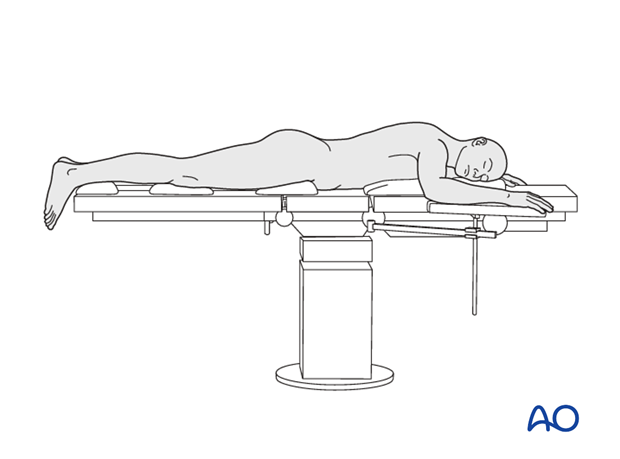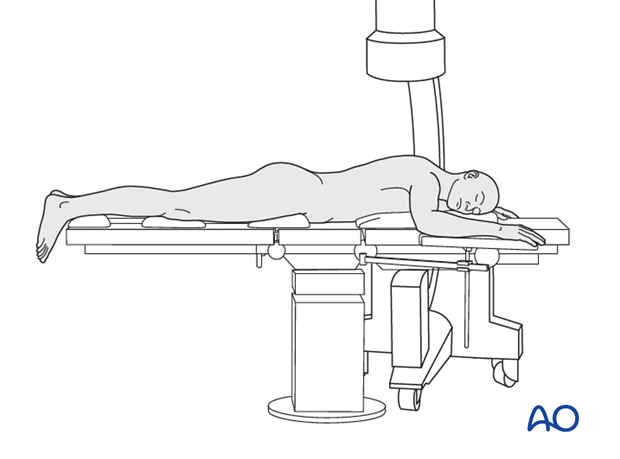Prone
1. Introduction
Proper patient positioning is crucial as incorrect positioning will keep the surgeon from performing a successful operation.
The beach chair provides anterior and lateral access to the shoulder joint while prohibiting posterior open approaches.
2. Advantages and disadvantages
Advantages:
- Allows wide posterior exposure of the scapula
- Also allows exposure of the posterior humerus
Disadvantages:
- Can be difficult in the polytraumatized patient or with concomitant chest injury.
- Does not allow any access to the clavicle and very limited access to the proximal humerus.
3. Positioning
Once the patient is anesthetized the patient is carefully turned over onto the operating table making certain that there is adequate padding such as chest bolsters, knee padding, and a padded facial mask. When using the facial mask make certain of adequate padding to prevent eye injuries. The uninvolved arm is padded and typically tucked in at the patient's side. The involved arm is draped free and placed on a padded operating arm support.

4. Intraoperative imaging
The image intensifier can be brought in from the contralateral side caudal to the main support stand of the operating room table.
The beam is directed:
- 45 degree antero-lateral (trans glenoid view or epsilon view)
- 45 degrees antero-medial (trans scapular view)
If available, a 3D-scan using a 3D-image intensifier will give the most detail and optimal imaging.














